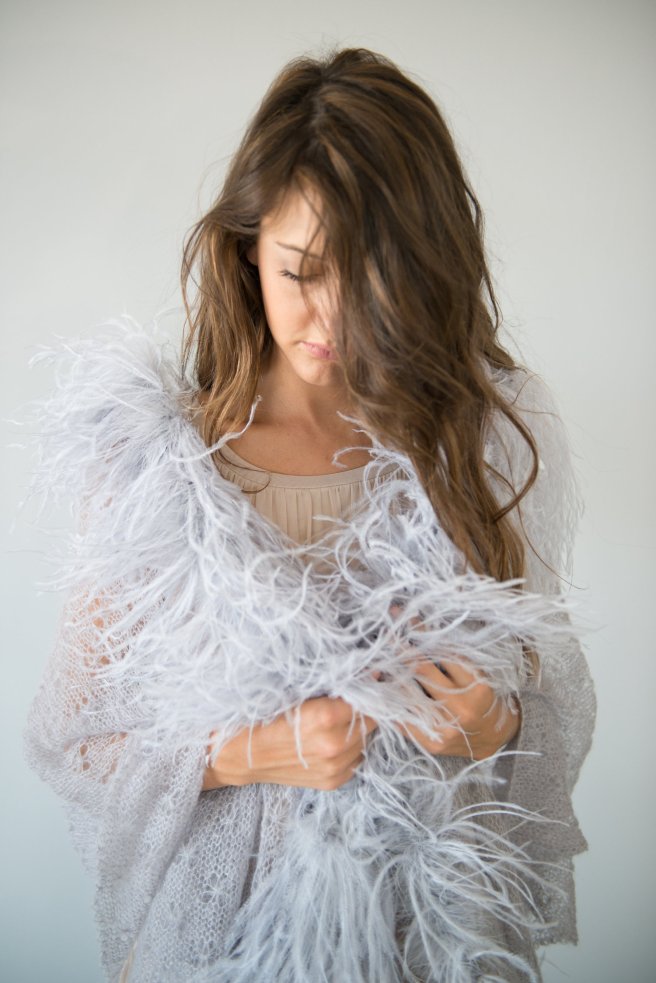
Once upon a time there was a goat called Allen and a girl called Candice. Allen lived in the Karoo which is a sensible place for a goat. Candice lived in Gardens which is a sensible place for a girl. Allen and Candice knew a secret not many South Africans, but several overseas visitors do: that his family of Angoras produce 75% of the entire planet’s mohair, and that this mohair – like most things to come out of the Karoo – is exceptionally beautiful and of an extremely high quality. So beautiful and so high that busloads of Germans and Americans and Brits flock to our shops every year and go suki la la and spend gazillions of monies on items which – compared to other parts of the world – are inexpensive, original and quite incomparably lovely.

And Allen and Candice think it’s a shame that the whole world knows of this thing and walks around Boston and Schleswig-Holstein wearing South African mohair while South Africans wear Foschini (no offence to this chain, but really). And it’s silly that we don’t know about this magnificent product right on our doorstep and support small businesses and the people who devote their lives to putting South Africa and its magic on the map. I met Candice at a dinner party a few years ago and loved two things about her: the fact that she runs marathons for fun and the magnificent, diaphanous scarf that floated about her shoulders like a rain cloud on a koppie. And I was astonished to hear she’d made it herself and that this, in fact, was her business.

Between her and her friend, Allen (and some of his friends), some of the prettiest and most delicate mohair products you’ve ever seen are produced and sold at selected stores around the country and online, and I think we need to familiarise ourselves with who is doing what down here and start making a real effort to support local businesses. It’s not easy competing with the big clothing corporations, and kudos to the ones with the courage to spot a gap in the market, venture out alone and do their own thing. I’ve been coveting Candice’s knitwear since I saw it, and I was excited beyond when she brought me a big box of woven beautifulness in shades of winter and told me to choose what I liked.

Candice’s products are made from kid mohair or baby mohair which is shorn from the fleece of a young Angora goat. Even though it is the softest and finest kind, it is in fact stronger and warmer than wool and will keep you cosy as anything when the weather turns cool. It’s lightweight, comfy, doesn’t itch, is the most durable of all animal fibres and won’t shrink which makes it easy to wash.
My favourites in her range are the ones which incorporate ostrich feathers (oh, another fact: every year South Africa exports a ton of feathers to Rio for the carnival. Just read that again: a ton. Do you know how little a feather weighs? Shem that they can’t even come up with their own). Mohair and ostrich feathers go together, in Candice’s words, ‘like cream and jam’. Clotted cream and gooseberry jam plunked on top of a hot, buttery scone fresh out of Karoo farm oven. There is nothing like a feather to make you feel like Edith Piaf in a Paris nightclub having no regrets, even if it’s just a Monday and you’re headed for the Spur.

So, a shout out to Candice, Edith and all the people in this world who are brave enough to be artists and creators and do something unique and original with their lives. And of course a shout out to Allen who, along with his sexy goat friends, has given us just one more reason to be proudly South African.
For more info on these fabulous things and how to find them look here. The website will help you locate stores in your area and give you info on prices. It was important to Candice, an animal lover, that my readers understand wool from Angora goats is very different to wool from Angora rabbits. While Angora rabbits are plucked, Allen simply gets a haircut. Which, in the Karoo summer, he adores.


